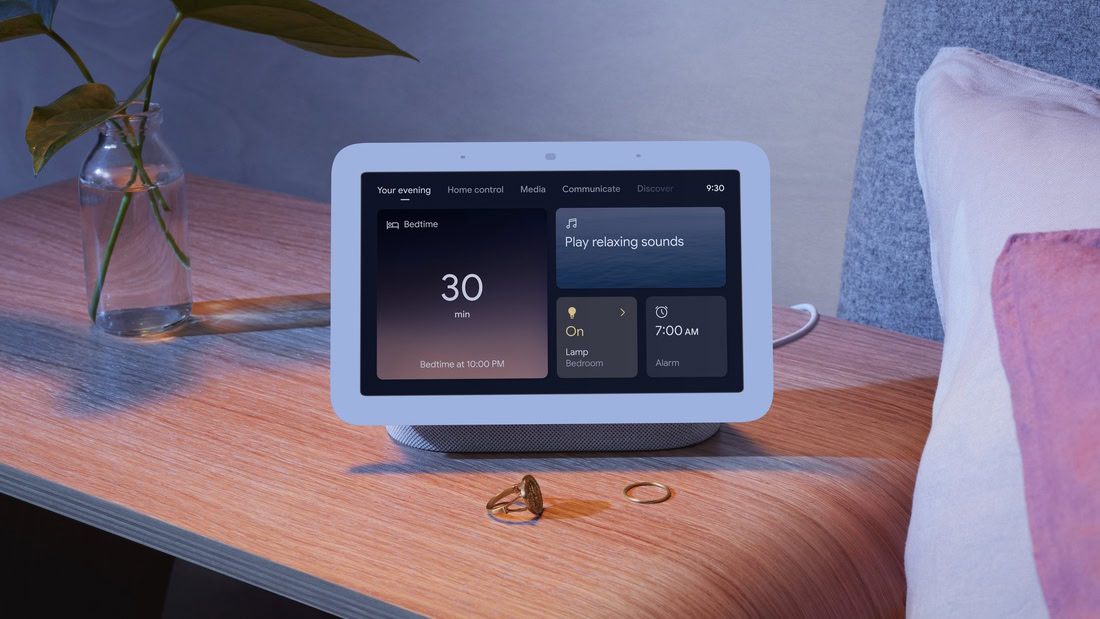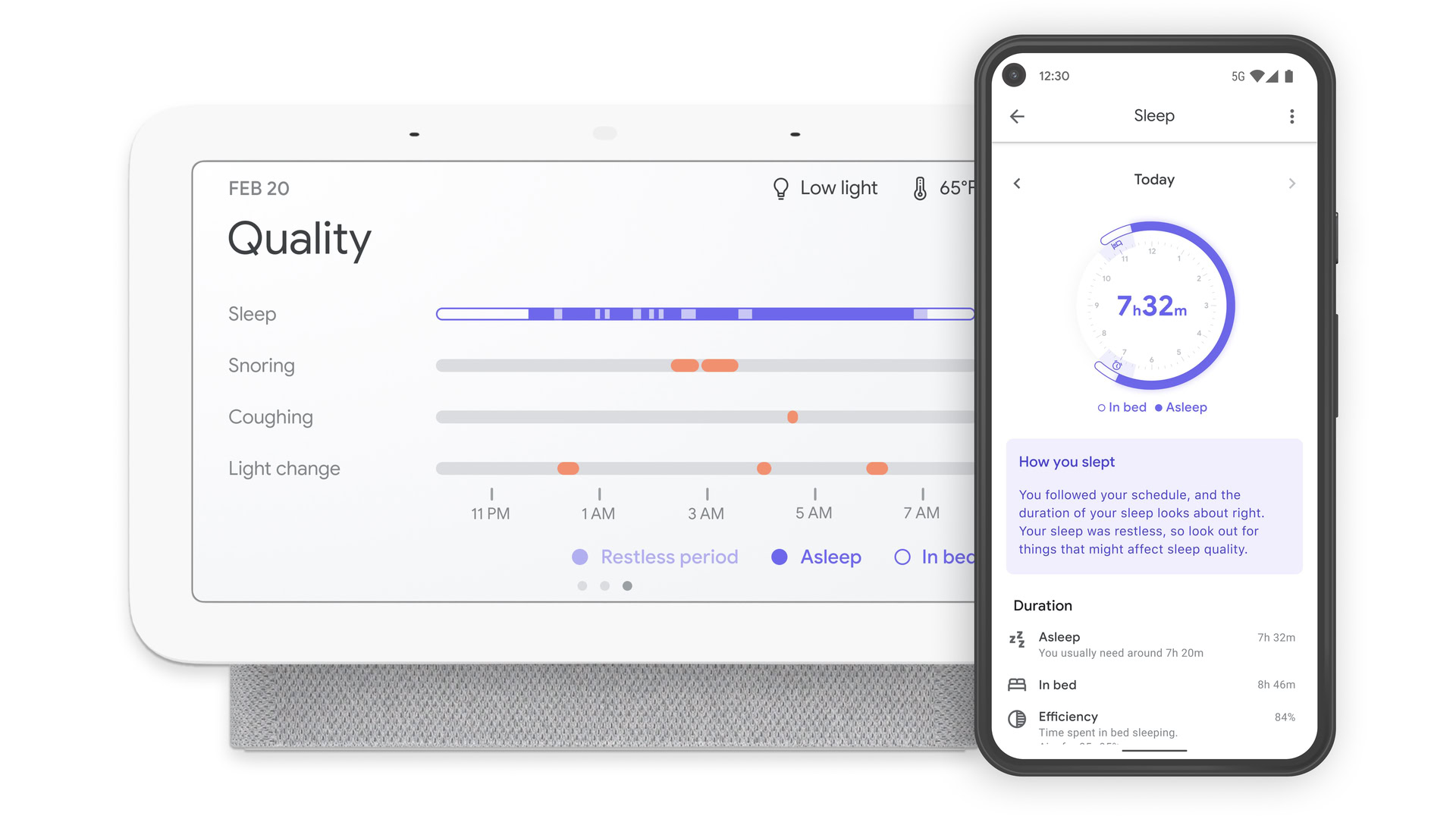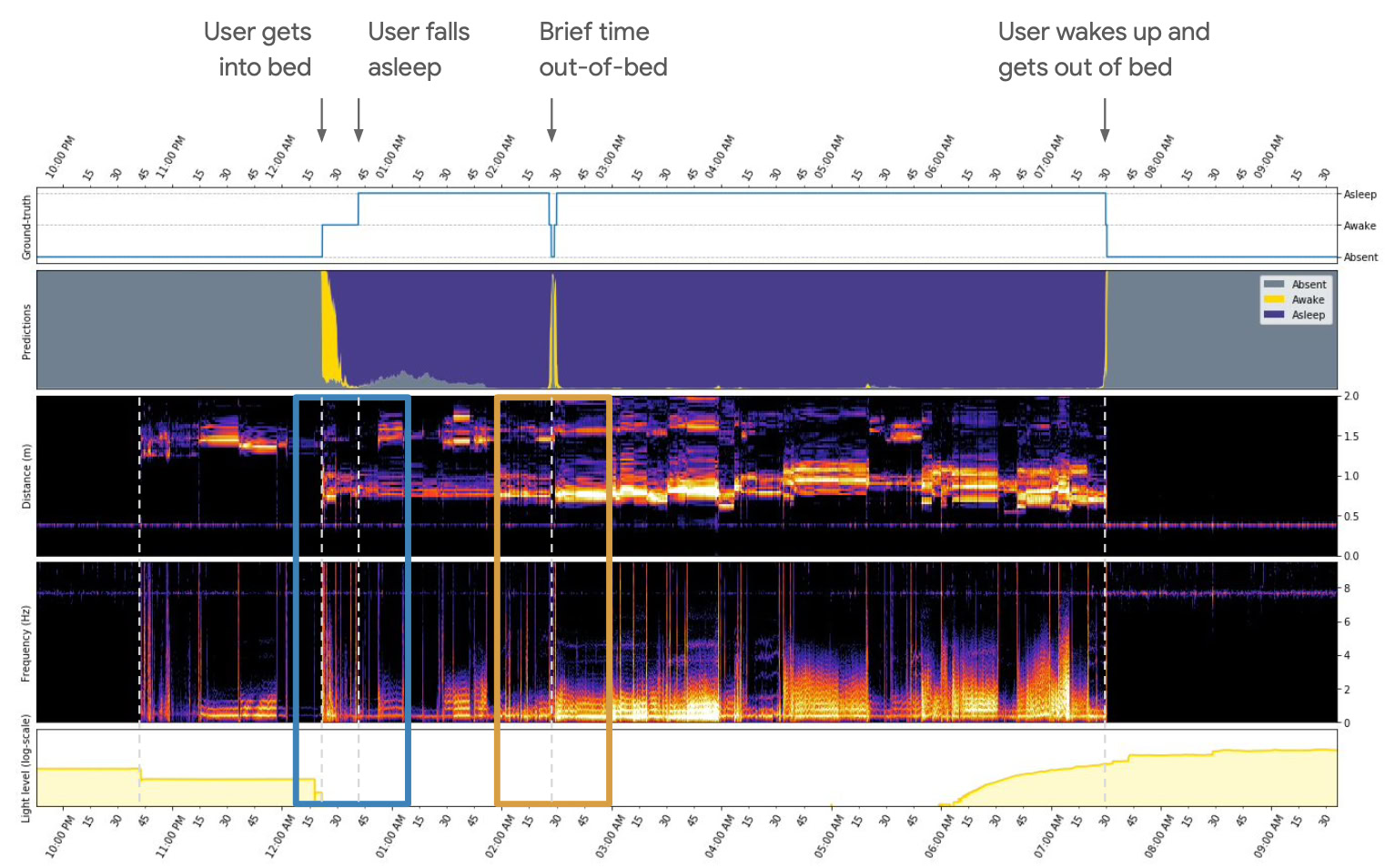Affiliate links on Android Authority may earn us a commission. Learn more.
Google's second-gen Nest Hub is here with bedside sleep tracking

- Google has announced the second-generation Nest Hub smart display.
- It features built-in bedside sleep tracking to track your motion patterns, breathing, and more.
- The new smart display resembles the original, though it has more bass and all-around improved sound.
We could all use some more sleep. Not everyone owns a fitness tracker they can wear to bed, nor does everyone want to wear one. That’s why Google built bedside sleep tracking into the new Google Nest Hub (second-gen).
On the surface, the new smart display looks very much like the original model. It has a 7-inch 1,024 x 600 resolution display, chunky bezels, and no camera. Audio output should be improved with the new device: Google says the speaker has been improved and supposedly offers 50% more bass. There’s also a third microphone to pick up your voice prompts a little more frequently, too. Plus, there’s an on-device machine learning chip this time around, allowing the display to process much more information on-device to give you answers much more quickly.
Like the Google Pixel 4 series, the new Nest Hub has Google’s Soli motion-sensing chip built in, which really opens up new functionality for the display. It doesn’t have all the same motion features as the Pixel 4, but you can do things like wave your hand to snooze an alarm.
Speaking of snoozing, the Nest Hub (second-gen) can actually track your sleep. Not only that, Google actually claims it can improve your sleep. Read more below.

Using the new Soli sensor — in addition to your room’s ambient sound, light, and the built-in temperature sensor — the new smart display will track your motion patterns, breathing, coughing, and duration of your sleep. It can even track when you snore! I know a lot of people who will benefit from that feature alone. When you wake up, you’ll be presented with an easy-to-read sleep analysis on the device. This sleep data also gets uploaded to Google Fit if you’d rather see it on your phone. You’ll see your total sleep duration, quality, overnight room temperature, snoring, coughing, and if your room lighting affected your sleep.
At this point, you might be a bit concerned about privacy. Google says the recorded audio and raw Soli data stays on the device and does not get sent to Google, though extrapolated sleep event data is sent to the company’s servers. You’re of course able to delete any data you don’t want Google to have access to, like if you had a, ahem, busy night.
It’s not just audio concerns, though. I’m sure you’re also conflicted about having something looking at you while you’re sleeping. Google’s presentation thankfully put us at ease. Here’s what the Nest Hub actually sees when it tracks your sleep:

Once the data is uploaded to Google Fit, you’ll be able to see it alongside any other fitness tracking data your wearable captured. If you happen to wear another sleep tracker to bed, Google Fit will ask you to prioritize a sleep tracker. So, you can’t get detailed sleep stages from your Withings ScanWatch as well as respiratory tracking from the smart display. It’s one or the other.
Sleep Sensing (Google’s name for sleep tracking) is completely opt-in and can be disabled at any time. Unfortunately this will be a paid feature. All new Nest Hub owners will be able to access a free preview of Sleep Sensing until 2022. Then, you’ll need to pay for the feature. Google didn’t tell us how you’ll need to pay for the service though, so it’s unclear if it’ll be a separate monthly/yearly charge, roped into Google One, or something else.
There are some limitations. Because the Nest Hub isn’t a wearable and only tracks your breathing rate and disturbances during the night, it won’t be able to track your sleep stages like most other wrist-worn devices.
If you sleep with a big dog in your bed, this might not be the sleep tracker for you. Google says variables like a dog jumping on your bed to sleep in the middle of the night might throw off the Nest Hub’s sleep data. In a perfect world, the Nest Hub would have a view of your body only and not be able to recognize movement from anyone else on your bed. Google assures us this shouldn’t be an issue with people who sleep next to a human partner, but those with busy nighttime routines might need to look elsewhere.
Interested? The second-gen Nest Hub is available for pre-order today from the Google Store and Best Buy for $99.99 in Chalk, Charcoal, Sand, and Mist colorways. Pre-orders are open in the US, UK, Canada, Germany, France, and Australia. More regions will be announced at a later date.